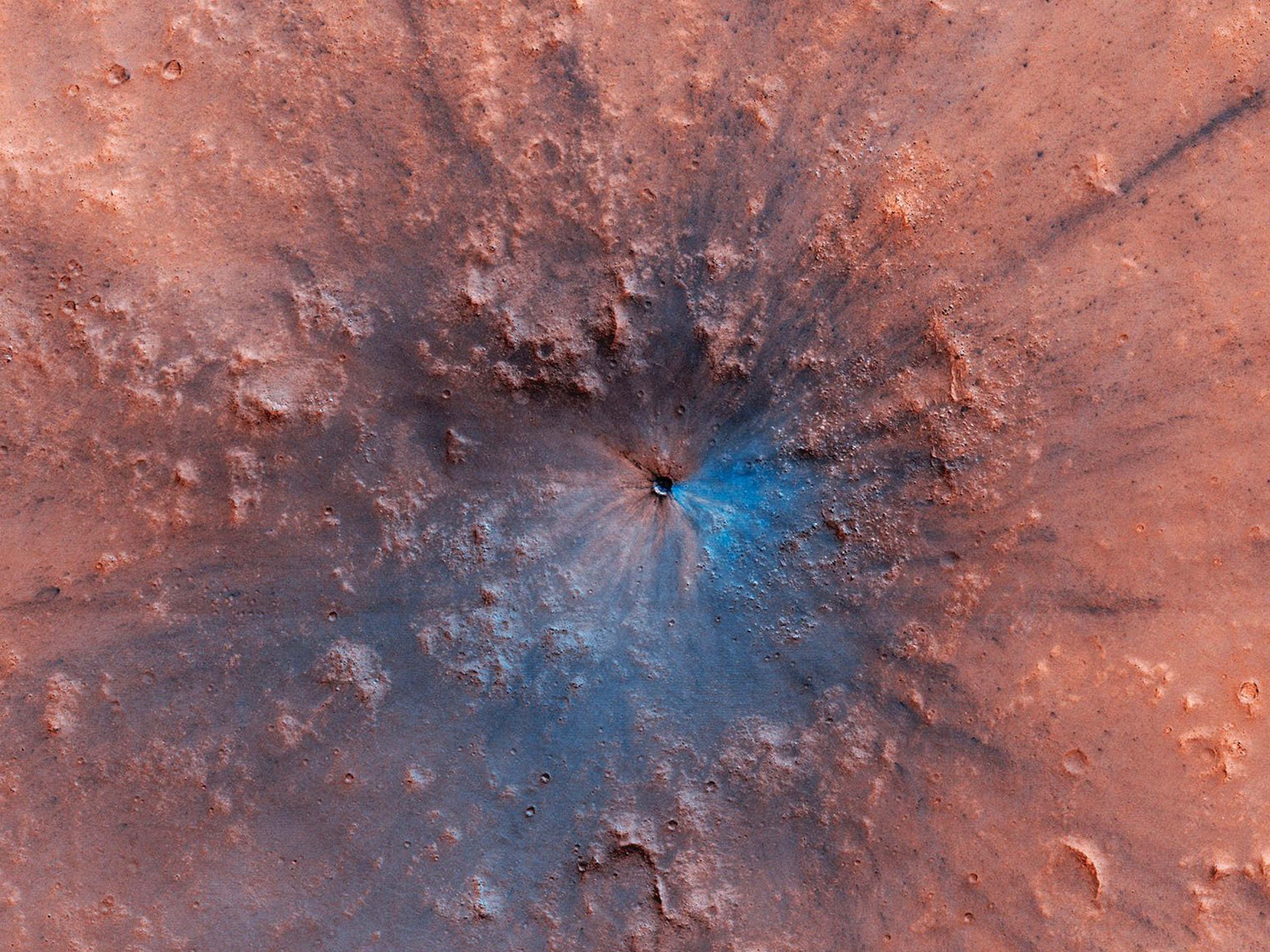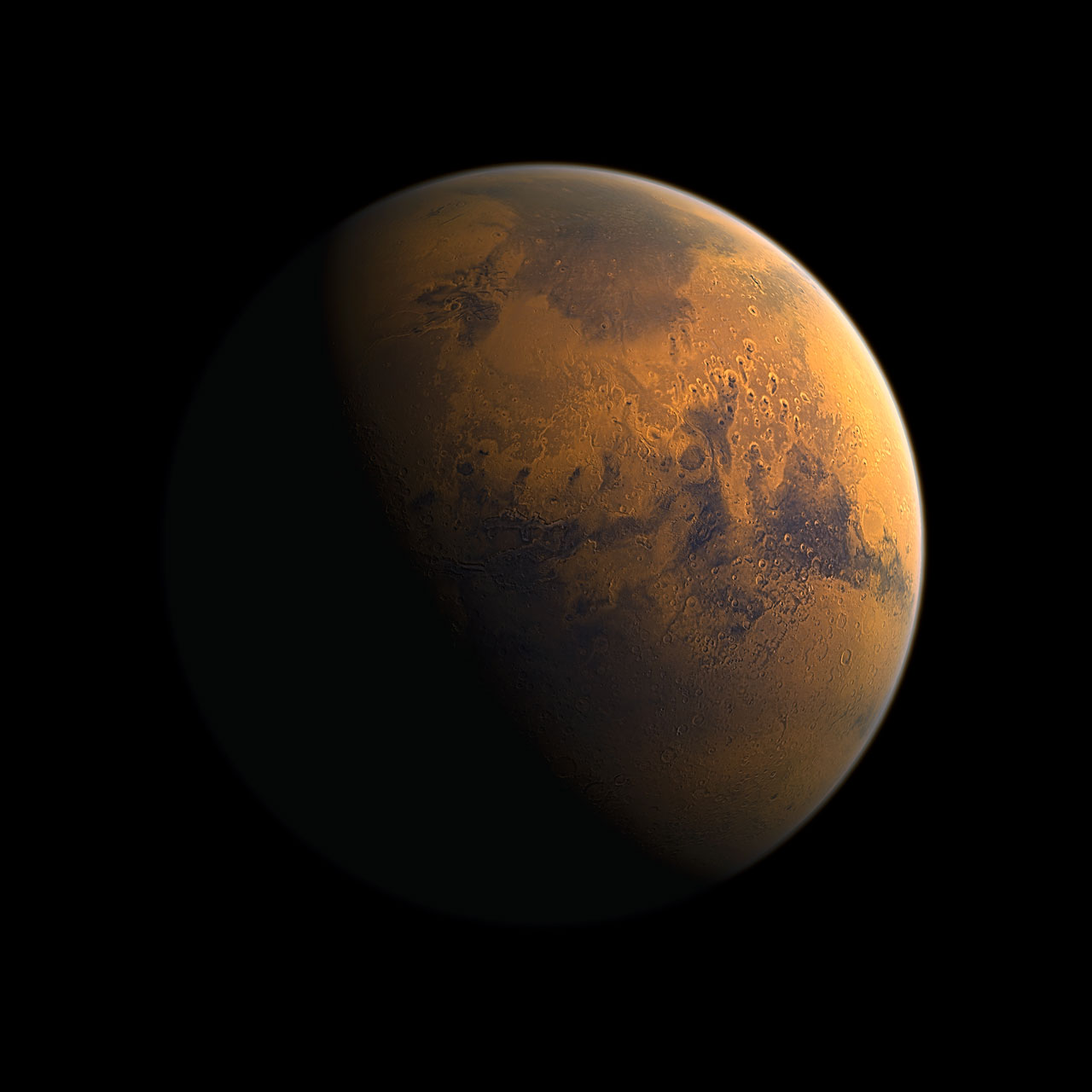Mars 'asteroid showers' have stayed steady over 600 million years
We might have to rethink the pace of Red Planet crater formation.

Our dating assumptions for the Red Planet might need a second look.
Fresh analysis of craters on Mars suggests that asteroids have been smashing into the surface at a consistent rate for at least 600 million years.
Scientists often use craters as a proxy to figure out how old a planetary surface is, since more impacts need more time to accrue. Analyzing crater formation is a complex process, however, and can rely on assumptions about how many asteroids burn up in the atmosphere and how many space rocks are in the region around the planet.
Related: NASA's Curiosity rover shares spectacular views of Mars
In new research, a team of scientists used a new crater detection algorithm to look at 521 impact craters on Mars that are more than 12 miles (20 kilometers) in diameter. Of that collection, only 49 craters formed in the last 600 million years and these were generated at a consistent rate, according to the new research.
The new work contradicts past research suggesting "spikes" in the number of craters during brief periods in the last 600 million years, study lead author Anthony Lagain, a research fellow and planetary scientist at Australia's Curtin University, said in a statement. Scientists presenting this theory thought that the impact spikes were caused by large asteroids breaking up and sending a cluster of fragments to hit the surface of Mars.
"When big bodies smash into each other, they break into pieces or debris, which is thought to have an effect on the creation of impact craters," Lagain said. "Our study shows it is unlikely that debris resulted in any changes to the formation of impact craters on planetary surfaces."
Get the Space.com Newsletter
Breaking space news, the latest updates on rocket launches, skywatching events and more!

A particular era on Mars that might require a second look is the so-called "Ordovician spike," which occurred about 470 million years ago. The new research shows the spike on Mars may instead be "[crater] preservation bias rather than a real increase in the asteroid impact flux," the authors wrote.
For future research, the authors call for more research on the possible timing of a spike (if there was any at all) on the moon, another large rocky body in our neighborhood — but with no substantial atmosphere.
A study based on the research was published in the Feb. 1 edition of Earth and Planetary Science Letters.
Follow Elizabeth Howell on Twitter @howellspace. Follow us on Twitter @Spacedotcom and on Facebook.
Join our Space Forums to keep talking space on the latest missions, night sky and more! And if you have a news tip, correction or comment, let us know at: community@space.com.

Elizabeth Howell (she/her), Ph.D., was a staff writer in the spaceflight channel between 2022 and 2024 specializing in Canadian space news. She was contributing writer for Space.com for 10 years from 2012 to 2024. Elizabeth's reporting includes multiple exclusives with the White House, leading world coverage about a lost-and-found space tomato on the International Space Station, witnessing five human spaceflight launches on two continents, flying parabolic, working inside a spacesuit, and participating in a simulated Mars mission. Her latest book, "Why Am I Taller?" (ECW Press, 2022) is co-written with astronaut Dave Williams.









